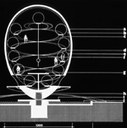0179 L’architecture prospective en Tchécoslovaquie
Convergences et divergences entre l’approche du groupe slovaque VAL (1968-1994) et la théorie architecturale de Michel Ragon
Identifiers (Article)
Identifiers (Files)
Abstract
The article discusses the resonance of Michel Ragon’s concept of prospective architecture in Czechoslovakia by taking the group VAL (Voies et Aspects du Lendemain) as an example. The article focuses not only on the similarities, but also on the divergences between the concept of prospective architecture defined in France and VAL’s projects from the 1970s. The article will try to reveal parallels between the VAL’s definition of architecture as a result of a game and a way to anticipate the new society, and the approach of architects and groups active in France as the Utopia, or the Internationale Situationniste. In conclusion, the text will emphasize the specificity of VAL’s projects, inseparably linked to the context of Czechoslovakia during the period of Normalization, and stress its heterogeneous characterlinking them more closely to the postmodern architecture.
Statistics


License

This work is licensed under a Creative Commons Attribution-NonCommercial-NoDerivatives 4.0 International License.



